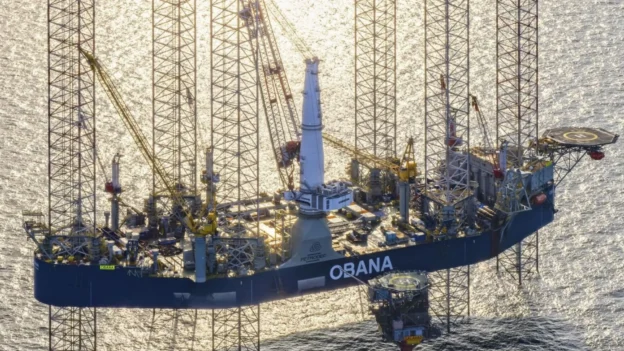During the Offshore Jack-Up and Marine Engineering Conference(OJME) 2025 held in London, Seatrium Offshore Technology(SOT), a subsidiary of Seatrium, together with its client Petrodec, presented with the OBANA project, the world’s largest self-elevating unit designed specifically for offshore decommissioning.
The strategic potential of the OBANA project
The OBANA development was conceived as an innovative technology for the decommissioning of offshore installations. decommissioning of offshore installations at the end of their useful life. Through its design it is based on the reuse of two legacy self-elevating platforms, integrated into a single highly capable unit.
Since its entry into operation in August 2025, OBANA has been active in the North Sea, directly contributing to the cleanup of obsolete structures and the responsible decommissioning of energy assets. In addition, its construction represents a circular economy model applied on a large scale, with 85 % of materials reused, including cranes and original structural components.
With a length of 205.7 meters and a width of 76.2 meters, OBANA reaches colossal dimensions, comparable to two soccer fields placed side by side. It is also equipped with seven cranes, including a main crane with a load capacity of 2,000 tons, enabling it to perform complex dismantling and removal operations of heavy structures in demanding maritime conditions.
OBANA’s presentation was also part of the 40th anniversary Jack-Up Conference, where it was relevant as an example of technical innovation and applied sustainability. Seatrium representatives Christian Ludwig and Sang-Bae Cha signed the agreement on behalf of Everllence. Everllence Dong-Jin Lee and Byung-Kuk Kang signed on behalf of HD Hyundai Mipo Dockyard and HD Hyundai Heavy Industries-Engine Machinery Division, respectively.
Ludwig stressed that this alliance represents a breakthrough in the maritime industry’s transition to carbon-free propulsion, while Cha highlighted the strategic role that ammonia will play in the sector’s energy future.
Source and photo: Seatrium

